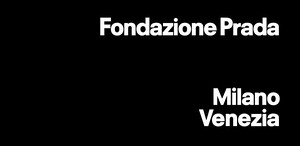(The stolen image)
March 18–August 28, 2016
L’image volée (The stolen image) is a group show curated by artist Thomas Demand, within an exhibition architecture designed by sculptor Manfred Pernice.
L’image volée includes more than 90 works produced by over 60 artists from 1820 through the present day. Demand’s idea for the exhibition is to explore the way we all rely on pre-existing models, and how artists have always referred to existing imagery to make their own. Questioning the boundaries between originality, conceptual inventiveness and the culture of the copy, the project focuses on theft, authorship, annexation and the creative potential of such pursuits. The exhibition presents three possible investigations: the physical appropriation of the object or its absence; theft as related to the image per se rather than the concrete object itself; and the act of stealing through the making of an image. The exhibition has been conceived as an eccentric, unconventional exploration of such topics through empirical inquiry. Rather than an encyclopedic analysis, it offers visitors an unorthodox insight into a voyage of artistic discovery and research.
The first section of the exhibition displays photographs, paintings and films in which the stolen or missing object becomes the scene or evidence of a crime. Included in this section are works that directly echo criminal ideas, such as Maurizio Cattelan’s Senza titolo (1991), or Stolen Rug (1969) by Richard Artschwager. Other works evoke the absence resulting from an act of theft, like the canvas by Adolph von Menzel, Friedrich der Grosse auf Reisen (1854), which had the portrayed faces incised from it. Other pieces are based on the alteration of preexisting artworks, for example, Richter-Modell (interconti) (1987) by Martin Kippenberger and Pierre Bismuth’s Unfolded Origami (2016).
The second part of the exhibition analyzes the logic behind appropriation within the creative process. This section begins with the concept of counterfeiting and falsification, exemplified by the hand-reproduced banknote by forger Günter Hopfinger. The exhibition moves on to explore practices that are close to Appropriation Art, such as Sturtevant’s Duchamp Man Ray Portrait (1966). Other artists drive the logic of counterfeiting to its limit, including taking possession of another artist’s identity. Other artworks are “improvements” or modifications of preexisting images, for example the défigurations by Asger Jorn, or collages such as those by Wangechi Mutu, Haris Epaminonda, Alice Lex-Nerlinger and John Stezaker. Along with these, Erin Shirreff and Rudolf Stingel create their paintings or videos using a photographic reproduction of an artwork from the past as their starting point. This section continues with a group of works in which the artists borrow elements from another medium or language, or decontextualize the images themselves, such as Thomas Ruff, Anri Sala and Guillaume Paris. This part of the exhibition also includes sculptural work by Henrik Olesen, and new works by Sara Cwynar, Mathew Hale, Oliver Laric and Elad Lassry.
The final, subversive part of L’image volée deals with the production of images which, by their very nature, reveal hidden aspects on a private or public level. John Baldessari, in his installation Blue Line (Holbein) (1988), calls into question the role of the spectator. Sophie Calle, in the series The Hotel (1981), aims to combine the artistic and private realms in her research, revealing intimate details of strangers’ lives. Another cluster of works develop considerations on public or openly political issues, for instance Christopher Williams in SOURCE… (1981). In the photographs Americas II, Bahamas Internet Cable System (BICS-1) and Globenet (2015), Trevor Paglen exposes the material infrastructure of mass surveillance. The final part of the exhibition presents a show within the show curated by a prominent contemporary industrial designer, featuring spy tools used by the GDR and the Soviet Union on their citizens: technological instruments capable of breaking down the barriers of the private sphere.
L’image volée is accompanied by an illustrated book published by Fondazione Prada with newly commissioned short stories by Ian McEwan and Ali Smith, essays by Russell Ferguson, Christy Lange and Jonathan Griffin, and contributions by Rainer Erlinger and Daniel McClean.



